Lo Mein and Udon are popular noodle types in Asian cuisine, each with unique characteristics and culinary uses. Let's explore the differences between these noodles, their culinary applications, and other relevant aspects.
Noodles are often served during special occasions, like birthdays, because noodles symbolize long life. It is believed that the longer the noodle, the longer the life will be for the birthday person. Be sure to check out my Easy Recipe for Stir-Fry Beef Udon Noodles, which takes less than 30 minutes to make!
Jump to:
- Lo Mein Noodles
- Lo Mein Culinary Uses
- Udon Noodles
- Udon Culinary Uses
- Key Differences Between Lo Mein and Udon Noodles
- Similarities Between Lo Mein and Udon Noodles
- Udon Substitutes
- Finding the Best Noodles
- Where to Find Them
- Can Udon Substitute Lo Mein and Vice Versa?
- FAQ
- Other Noodles Dishes
- Cooking Tips for Noodles
- 💬 Reviews
Lo Mein Noodles
Lo Mein, originating in China, is a dish made with egg noodles that are typically yellow due to the added egg yolk. These noodles have a rich history dating back to the Han Dynasty and have evolved into a globally embraced culinary delight. It is known for its silky, tender texture and ability to hold up well in stir-fry dishes due to its chewy nature. Lo Mein is often cooked in oil, which contributes to a higher fat and sodium content, and its dishes are usually lighter in calories compared to Udon.
Lo Mein Culinary Uses
- Stir-Fried Dishes: Lo Mein noodles are typically stir-fried with ingredients like chicken, beef, shrimp, and vegetables such as bok choy, mushrooms, and green onions.
- Savory Sauces: They pair well with sauces like soy sauce, oyster sauce, and sesame oil, absorbing these flavors to create a rich and savory dish.
- Asian Fusion: Lo Mein noodles are adaptable in Asian fusion dishes, combining elements from different Asian cuisines, like incorporating Thai basil or Korean gochujang for a unique twist.
Udon Noodles
Udon, a Japanese noodle, is made from wheat flour, salt, and water, resulting in a thick, chewy texture. It has a long-standing place in Japanese cuisine, dating back to the 9th century, and is considered a comfort food. Udon is typically served in a warm broth with various flavors and toppings, making it versatile for lunch and dinner. It's known for its soft, springy texture and is often boiled before being used in dishes. Udon has a neutral flavor, absorbing the tastes of broths or sauces, and is lower in calories and fat compared to Lo Mein.
Udon Culinary Uses
- Noodle Soups: Udon is a staple in Japanese noodle soups, such as Kitsune Udon and Tempura Udon, where the thick noodles absorb the broth's flavors.
- Stir-Fries: Thick Udon noodles also work well in stir-fried dishes, often mixed with various proteins and vegetables.
- Cold Salads: Udon can be used in cold salads, offering a chewy contrast to crisp vegetables and light dressings.
- Hot Pot (Nabemono): Udon is a popular choice in Japanese hot pot dishes, absorbing the rich flavors of the communal cooking style.
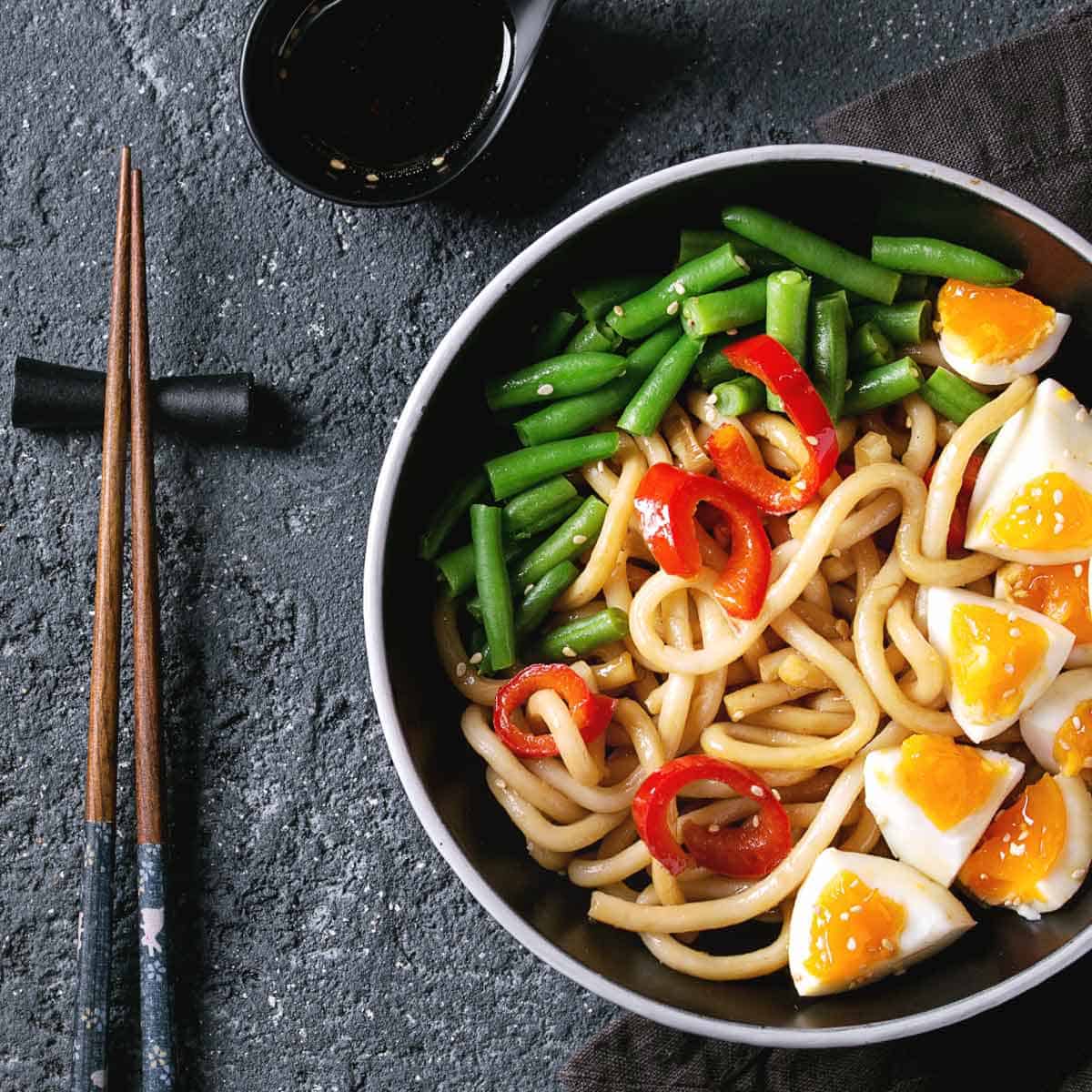
Key Differences Between Lo Mein and Udon Noodles
Ingredients
- Lo Mein: These Chinese noodles are a type of egg noodles incorporating wheat flour and eggs. This combination imparts a distinctively rich, chewy texture.
- Udon: A hallmark of Japanese cuisine, Udon is made with wheat flour, water, and occasionally salt, resulting in a simple yet satisfying noodle.
Texture
- Lo Mein: Exhibits a silky, somewhat springy texture, ideal for absorbing the robust flavors of stir-fried dishes.
- Udon: Known for their thick, chewy nature, Udon noodles offer a satisfyingly hearty bite, often broader and denser than their Lo Mein counterparts.
Cooking Methods
- Lo Mein: Typically stir-fried, Lo Mein noodles embrace high heat, mingling with ingredients like bok choy, bean sprouts, and sauces like soy sauce and oyster sauce. This method highlights their ability to absorb and complement a variety of flavors.
- Udon: Generally boiled and featured in brothy dishes, Udon noodles excel in soup-based meals, including traditional Japanese noodle soups and nabemono (hot pot dishes), where they absorb the subtle nuances of the broth.
Nutritional Value
- Lo Mein: With the addition of eggs, these noodles can be higher in protein but also may carry more calories and sodium, especially when combined with stir-fried sauces.
- Udon: Tends to be lower in calories and fat, offering a lighter option. Their simplicity makes them a versatile base for nutrient-rich ingredients in hot and cold dishes.
Flavor Profile
- Lo Mein: The egg content in Lo Mein noodles gives them a richer flavor profile, making them stand out in dishes even when mixed with strong flavors like garlic, ginger, and sesame oil.
- Udon: With a milder, wheat-based taste, Udon noodles serve as a canvas, absorbing and complementing the flavors of their accompanying broths and sauces, from delicate soy-based concoctions to more complex dashi-infused soups.
Similarities Between Lo Mein and Udon Noodles
Asian Cuisine Staples: Lo Mein and Udon are integral to Asian cuisines, with Lo Mein being a Chinese favorite and Udon a Japanese staple.
Wheat-Based Noodles: Each is made primarily from wheat flour, positioning them as key wheat-based noodles in their respective culinary traditions.
Versatile in Dishes: Lo Mein and Udon are adaptable to various dishes, from stir-fried noodles to noodle soups, showcasing their flexibility in Asian cooking.
Texture Focus: They share a focus on texture, with Lo Mein providing a chewy bite and Udon offering a thick, chewy texture. Both add a satisfying mouthfeel to dishes.
Flavor Absorption: Both noodles are excellent at absorbing flavors, whether the rich sauces in Lo Mein dishes or the savory broths in Udon noodle soups.
Pairing with Proteins and Vegetables: They can be combined with a range of ingredients like chicken, beef, bok choy, and green onions, making them suitable for diverse and nutritious meals.
Popular in Asian Restaurants: Both types of noodles are commonly found in Asian restaurants, providing diners with a taste of traditional Chinese and Japanese cuisines.
Udon Substitutes
Rice Noodles: Particularly thicker varieties, like Pad Thai noodles, can be used as a gluten-free option, offering a similar heft to Udon.
Rice Vermicelli: While thinner, they can be used in soups and stir-fries if Udon is unavailable.
Soba Noodles: Soba can substitute Udon, especially in cold salads or light broths, providing a similar chewy texture.
Finding the Best Noodles
Best Lo Mein Noodles
- Egg Noodles: The traditional and most popular choice for Lo Mein. They offer a neutral flavor and a desirable chewy texture, perfectly complementing the savory and often spicy sauces typical in Lo Mein dishes.
- Yellow Egg Noodles: In China, Lo Mein is commonly made with yellow egg noodles. These have a soft texture, are slightly thicker than spaghetti, and are known for their distinct yellow color due to alkaline salt.
- Lo Mein Noodles Label: Look for noodles specifically labeled as “Lo Mein noodles,” typically crafted from a mix of wheat flour, water, salt, and sometimes alkaline additives like lye-water, making them ideal for Lo Mein recipes.
Best Udon Noodles
- Fresh Udon Noodles: Typically made with wheat flour, salt, and water, fresh udon noodles have a soft, chewy texture and mild flavor, ideal for hot noodle soups like kitsune udon or tempura udon.
- Dried Udon Noodles: Slightly denser and chewier than fresh ones, dried udon noodles are great for stir-fries and cold noodle salads. They should be soaked in hot water before cooking to rehydrate them.
- Frozen Udon Noodles: A convenient option for those without access to fresh noodles, frozen udon noodles are pre-cooked and frozen, suitable for hot noodle soups or stir-fries.
- Whole Wheat Udon Noodles: For a healthier choice, whole wheat udon noodles are made with whole wheat flour, offering a nuttier flavor and firmer texture, adding more fiber to your diet.
- Gluten-Free Udon Noodles: Ideal for those with gluten intolerance, these noodles are usually made with rice flour or a blend of rice and cornstarch and can be enjoyed in various dishes.
Where to Find Them
Lo Mein and Udon noodles are typically found in Asian markets, with options ranging from fresh to dried and even frozen varieties. It's important to consider the dish you are planning to make and your dietary preferences when selecting the type of noodle. Experimenting with different types and brands can also be a great way to discover your personal preference, as these noodles are generally affordable and widely available.
Can Udon Substitute Lo Mein and Vice Versa?
While Udon can be used as a substitute for Lo Mein, it will result in a different texture and taste. Lo Mein noodles, due to their thinner and softer nature, might not be an ideal substitute for the thicker Udon in certain dishes.
FAQ
No, both Lo Mein and Udon noodles are typically made from wheat flour and are not gluten-free. However, gluten-free alternatives are available, using rice or other gluten-free flour.
Yes, Lo Mein and Udon noodles can be stir-fried, offering different textures and flavor absorption capabilities.
Yes, Udon itself is vegetarian-friendly and can be served in vegetarian or vegan dishes, especially when paired with vegetable broths and an array of vegetables.
Yes, Udon noodles can be served cold, often in salads or with a dipping sauce, offering a refreshing alternative to hot dishes.
Common vegetables include bok choy, bell peppers, carrots, mushrooms, and bean sprouts, adding flavor and nutritional value.
Other Noodles Dishes
Looking for other recipes like this? Try these:
Cooking Tips for Noodles
Learn about different types of noodles and how to store them:
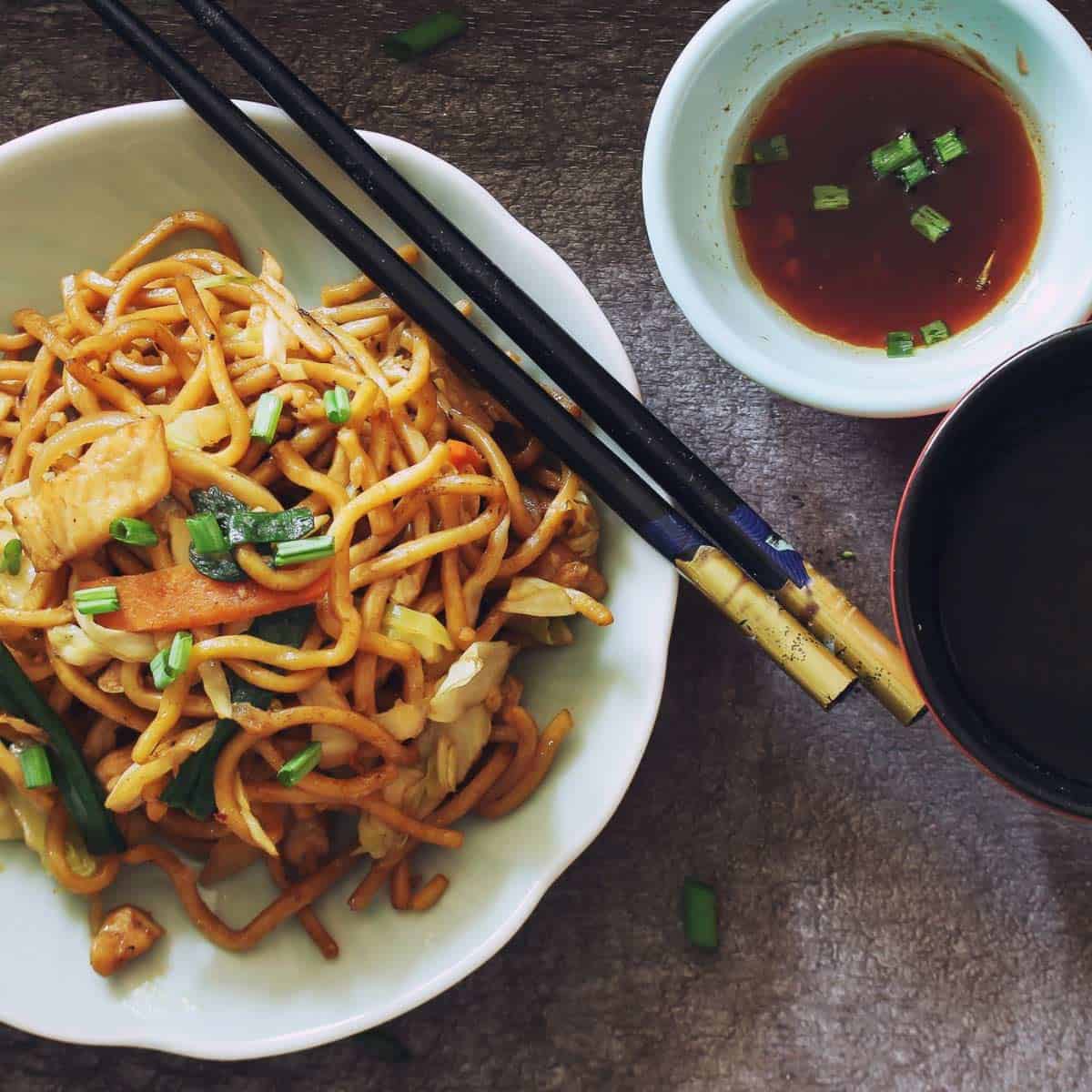
Instructions
Ingredients
- Lo Mein: These Chinese noodles are a type of egg noodles incorporating wheat flour and eggs.
- Udon: Made with wheat flour, water, and occasionally salt.
Texture
- Lo Mein: Exhibits a silky, somewhat springy texture.
- Lo Mein: Known for their thick, chewy nature.
Cooking Methods
- Lo Mein: Typically stir-fried, Lo Mein noodles embrace high heat, mingling with ingredients like bok choy, bean sprouts, and sauces like soy sauce and oyster sauce. This method highlights their ability to absorb and complement a variety of flavors.
- Udon: Generally boiled and featured in brothy dishes, Udon noodles excel in soup-based meals, including traditional Japanese noodle soups and nabemono (hot pot dishes), where they absorb the subtle nuances of the broth.
Nutritional Value
- Lo Mein: With the addition of eggs, these noodles can be higher in protein but also may carry more calories and sodium.
- Udon: Tends to be lower in calories and fat, offering a lighter option.
Flavor Profile
- Lo Mein: The egg content in Lo Mein noodles gives them a richer flavor profile, making them stand out in dishes even when mixed with strong flavors like garlic, ginger, and sesame oil.
- Udon: With a milder, wheat-based taste, Udon noodles serve as a canvas, absorbing and complementing the flavors of their accompanying broths and sauces, from delicate soy-based concoctions to more complex dashi-infused soups.

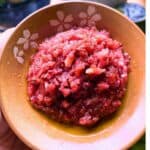


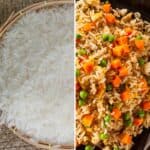
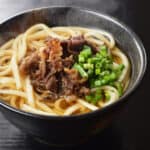
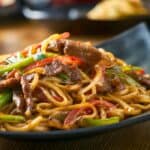
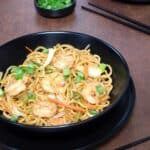

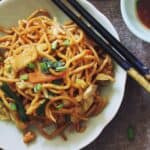

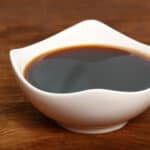
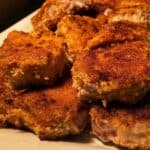
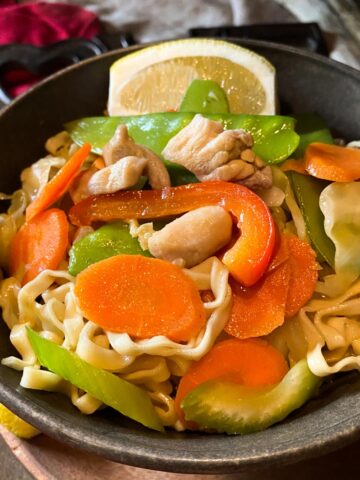
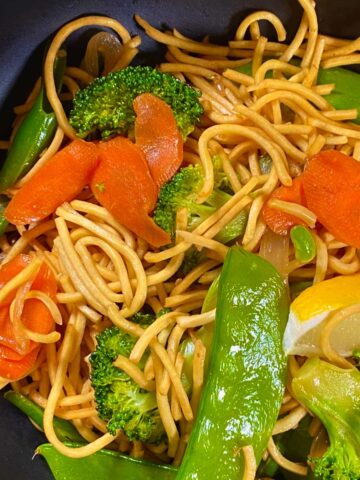
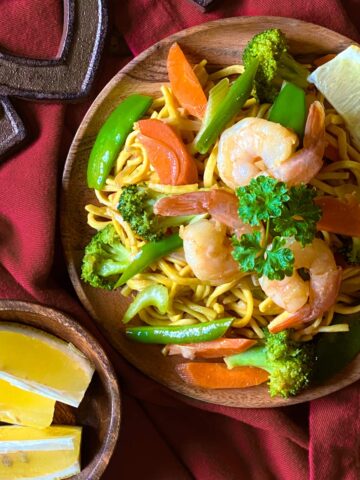
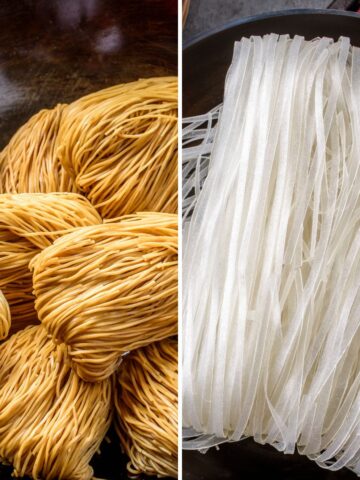
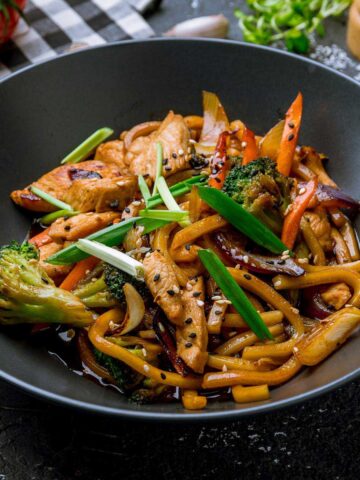
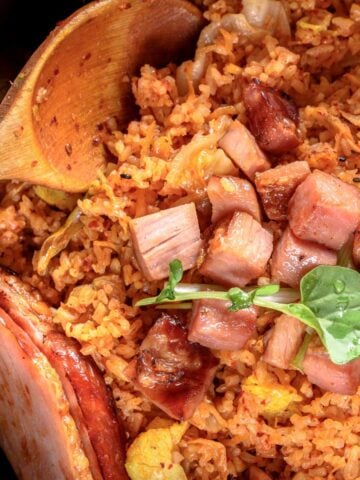
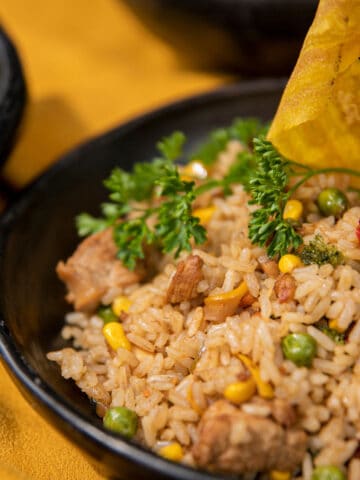
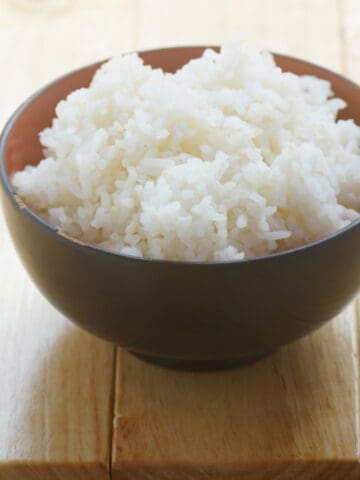
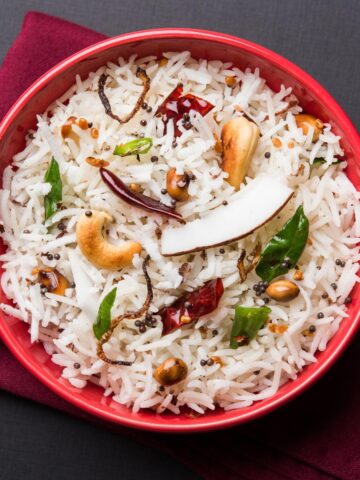
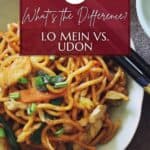
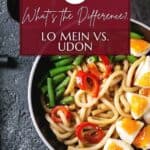
Comments
No Comments